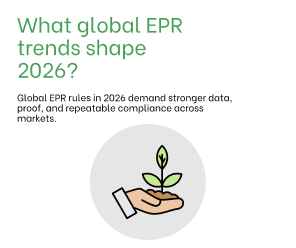New EU rules for e-commerce merchants in 2021
New EU rules for e-commerce merchants in 2021
Four main changes will come into force in July 2021:
The first one concerns the new OSS system – where a merchant can do VAT reporting obligations to all EU countries via One Stop Shop and use one VAT number to be able to sell in all EU countries.
The second big shift is the EU’s new legislation for OMP. It will come into force in July 2021. OMP will be responsible for VAT calculation and VAT payment in the EU.
The third one is the distance sales threshold removal.
The fourth one is the import low-value threshold removal.
What does it mean for you? Here are several questions you need to consider:
1 Consider where you need to deregister your VAT number. The main change – is a single EU VAT return.
Several cases are not covered by OSS when you still need a local VAT number:
a) If you plan to do VAT refunds from import transactions
b) If you use a local warehouse
c) When you sell B2B
If you just do remote sales (bear in mind the absence of distant sales thresholds) you will be able to report these sales via OSS.
2 When you sell via Marketplaces and Marketplace collects and pays VAT to local tax offices. Can you refund the VAT paid at customs?
A marketplace becomes a deemed supplier for B2C sales. It means that you will have exempted sales with the right to deduct. That means that you can credit VAT paid at custom clearance. Note that you need the EU EORI number for customs clearance and this number needs to be connected to your VAT number.
3 How should you report sales made via Marketplace?
It depends on the country of reporting. Normally you need to report them as exempted sales. At Lovat platform, you can view these sales separately for each country at the first step of VAT return filling.
4 Distance sales threshold as we use it now will be removed. VAT destination principle will be in 99% of sales – that means that VAT needs to be calculated at the buyer country. The new cross-EU threshold of 10K euro is introduced for small cross-border sellers. That means that when all your sales of goods and digital services to all EU countries is less than 10 K euro per year you can pay VAT in your home country. This threshold does not apply to a non-EU established business.
5 Import low-value threshold will be removed – that means that VAT must be paid to all parcels irrespective of their value. There will be a possibility to use simplification for low-value goods (150 Euro or less). And there will be EU -wide customs duty relief for low-value goods. IOSS – Importing a one-stop shop is an optional scheme for e-commerce sellers.
It is a really big reform, so if you have questions please send them to us or E-mail at info@vatcompliance.co – we will cover them in our next blog articles.



